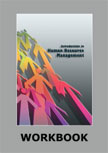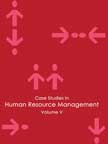SAIL's Voluntary Retirement Scheme
|
|
ICMR HOME | Case Studies Collection
Case Details:
Case Code : HROB002
Case Length : 07 Pages
Period : 1999-2001
Organization : SAIL
Pub Date : 2001
Teaching Note : Available
Countries : India
Industry : Metals & Mining
To download SAIL's Voluntary Retirement Scheme case study
(Case Code: HROB002) click on the button below, and select the case from the list of available cases:

Price:
For delivery in electronic format: Rs. 200;
For delivery through courier (within India): Rs. 200 + Shipping & Handling Charges extra
» Human Resource and Organization Behavior Case Studies
» HRM Short Case Studies
» View Detailed Pricing Info
» How To Order This Case
» Business Case Studies
» Area Specific Case Studies
» Industry Wise Case Studies
» Company Wise Case Studies

Please note:
This case study was compiled from published sources, and is intended to be used as a basis for class discussion. It is not intended to illustrate either effective or ineffective handling of a management situation. Nor is it a primary information source.
Chat with us

Please leave your feedback

|
|




<< Previous
Introduction
|
At a meeting of the board of directors in June 1999, the CEOs of Steel Authority
of India's (SAIL) four plants - V. Gujral (Bhilai), S. B. Singh (Durgapur), B.K.
Singh (Bokaro), and A.K. Singh (Rourkela) made their usual presentations on
their performance projections. One after the other, they got up to describe how
these units were going to post huge losses, once again, in the first quarter1 of
1999-2000. After incurring a huge loss of Rs 15.74 billion in the financial year
1998-99 (the first in the last 12 years), the morale in the company was
extremely low. The joke at SAIL's headquarters in Delhi was that the company's
fortunes would change only if a VRS was offered to its CEOs - not just the
workers.
|

|
Background Note
SAIL was the world's 10th largest and India's largest steel manufacturer
with a 33% share in the domestic market. In the financial year
1999-2000, the company generated revenues of Rs. 162.5 billion and
incurred a net loss of Rs 17.2 billion. Yet, as on February 23, 2001,
SAIL had a market valuation of just Rs. 340.8 billion, a meager amount
considering the fact that the company owned four integrated and two
special steel plants.
|
|
SAIL was formed in 1973 as a holding company of the
government owned steel and associated input companies. In 1978, the
subsidiary companies including Durgapur Mishra Ispat Ltd, Bokaro
Steels Ltd, Hindustan Steel Works Ltd, Salem Steel Ltd., SAIL
International Ltd were all dissolved and merged with SAIL. In 1979,
the Government transferred to it the ownership of Indian Iron and
Steel Company Ltd. (IISCO) which became a wholly owned subsidiary of
SAIL.
SAIL operated four integrated steel plants, located at Durgapur
(WB), Bhilai (MP), Rourkela (Orissa) and Bokaro (Bihar). |
The company also operated two alloy/special steel plants
located at Durgapur (WB) and Salem (Tamil Nadu). The Durgapur and Bhilai plants
were pre-dominantly1ong products2
plants, whereas the Rourkela and Bokaro plants had facilities for manufacturing
flat products3...
Excerpts >>
|
|










